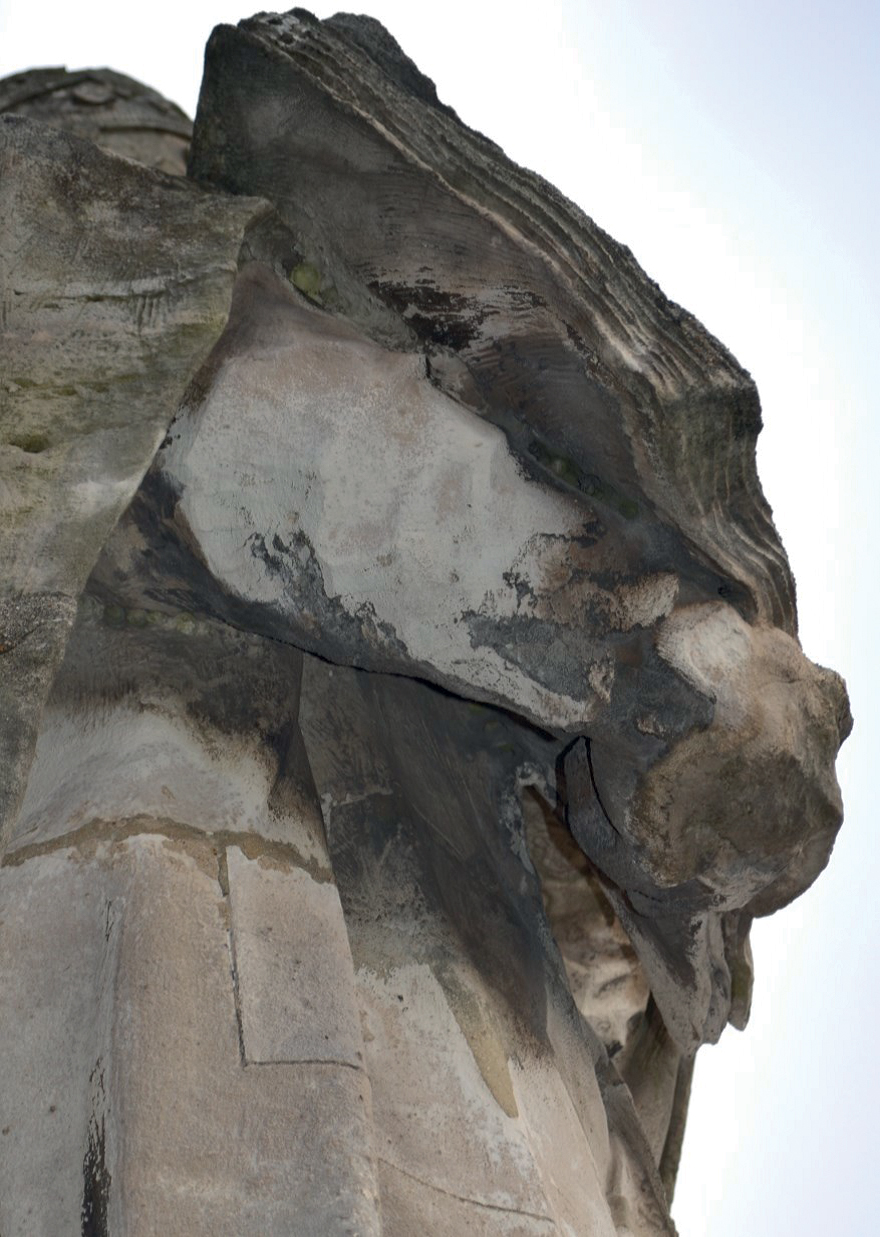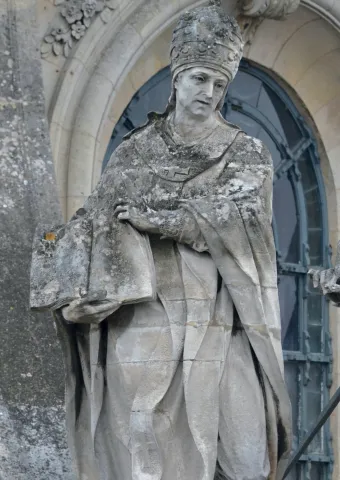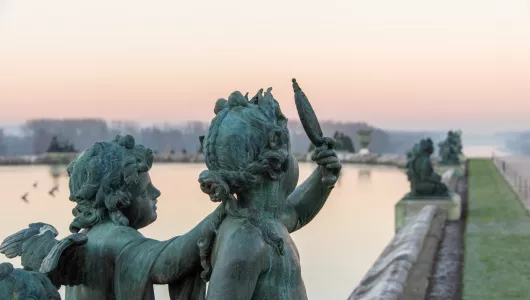Saint Gregory the great
The sixty-fourth Catholic Pope, Saint Gregory the Great was also one of the four Fathers of the Latin Church, together with Ambrose, Augustine and Jerome. Clean-shaven, he is represented in pontifical attire with the triple crown on his head; he is wearing a chasuble and a pallium over an alb with lace-edged cuffs. His left index finger raised to indicate teaching and he is presenting an open book held in his right arm, which is the book of liturgical reform. Born in around 540 in Rome to a patrician family, Saint Gregory began his career as a public administrator before adopting a monastic life. He was initially abbot of a Benedictine monastery that he founded on his family’s land, and he was elected Pope in 590. A great reformer, he was also a theologian and philosopher whose writing profoundly influenced medieval thinking.

Saint Gregory the Great - detail
© EPV/Thomas Garnier
the sculptor Pierre Lepautre
After winning the Prix de Rome in 1683, Lepautre, who was a student of Magnier, stayed in that city for 15 years. His works include copies of antiques now in the Louvre as well as several groups of sculpted figures in the Tuileries including Aneas and Anchises (1716) and Paetus and Arria, which had been started by the sculptor Jean Théodon. For the interior of the Royal Chapel of Versailles, he sculpted a group of angels in lead as well as two angels in bronze and the bas-relief of Modesty and Chastity. Lepautre also made an etching of Coysevox’s statue of Louis XIV, erected in Paris in 1689.







